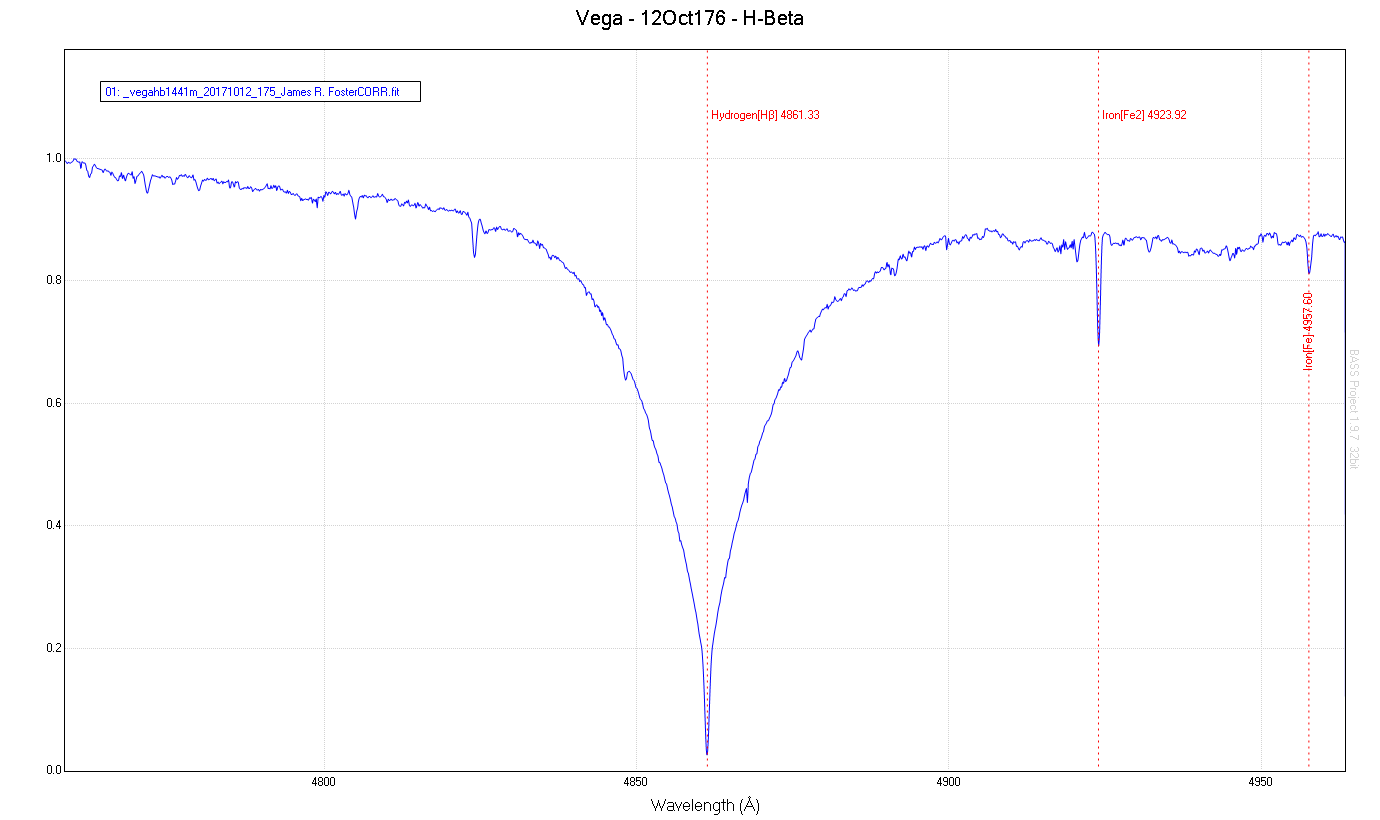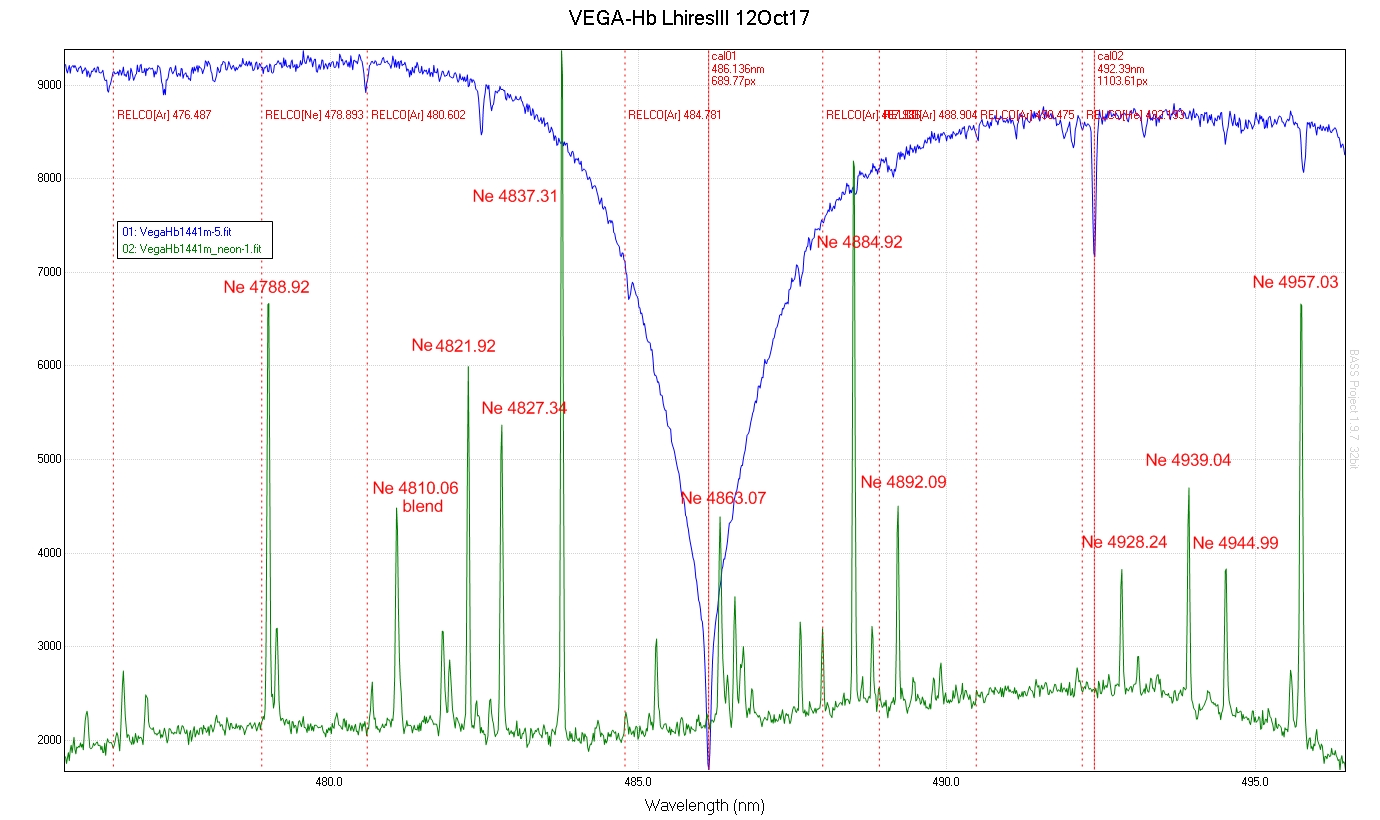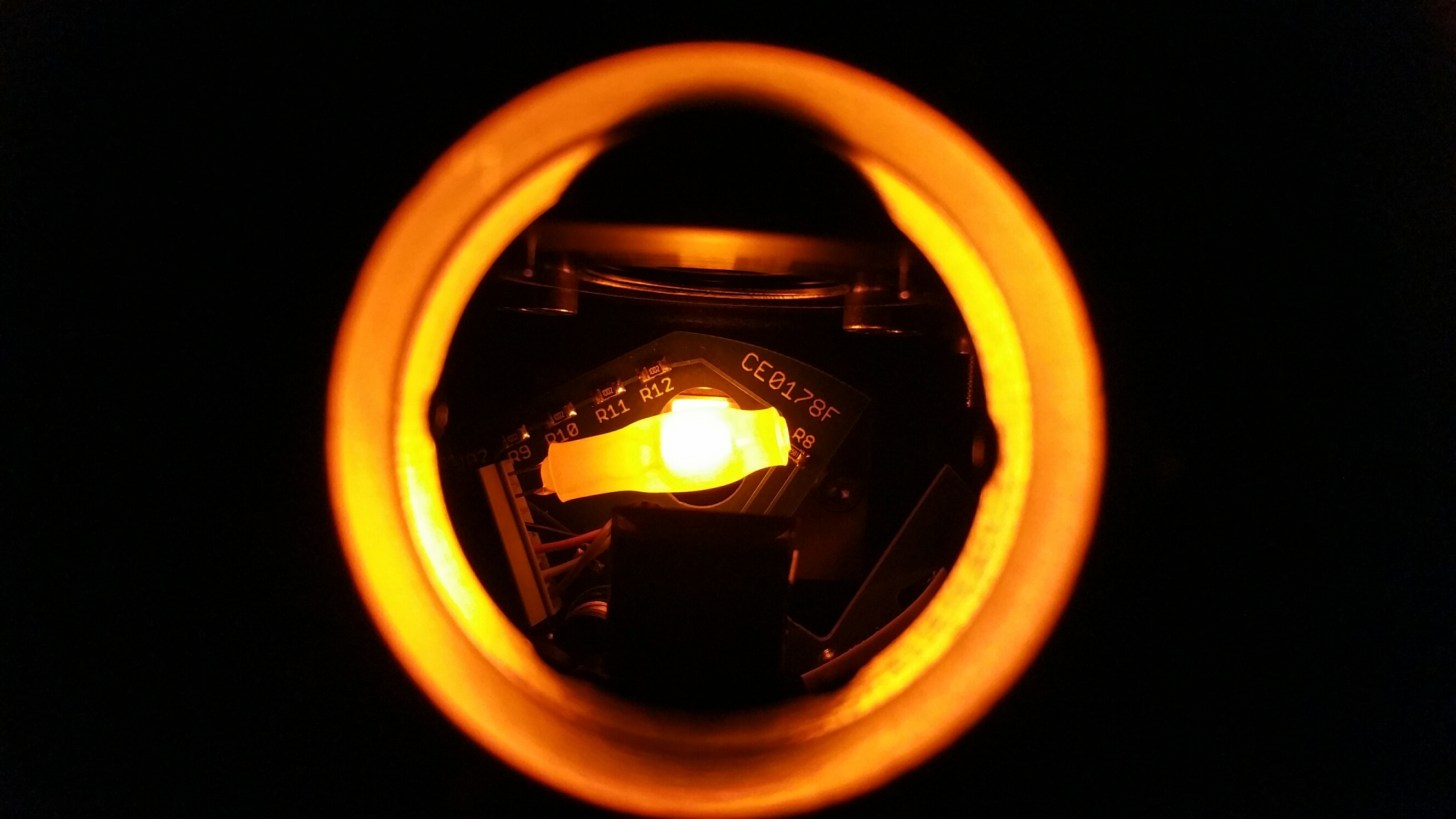Hello James,
3 lines is the bare minimum for order=2, you should include as much as possible!
3 lines also won't determine any error, RMS will always be "too nice" with (order+1).
Avoid such a condition whenever possible, and try to include as many lines adding one by one, till RMS doesn't jump suddenly! (a little combinatoric game, to include lines one by one from an external library, and experiment which makes the RMS wrong, of course works above order+2 lines only, wide spread evenly on the chip)
Your chip is bigger than mine, so you'll have even more usable lines. The more lines you add, you improve RV measurement quality the more (can't check visually)!
After some practice (and first hard effort), it will be reusable.
Here is my ISIS log snippet for the 5 lines (cal file already posted):
Wavelength fitting error
Line #1 x = 200.761 lambda = 4847.810 dlambda = 0.000
Line #2 x = 409.623 lambda = 4879.864 dlambda = -0.001
Line #3 x = 469.678 lambda = 4889.042 dlambda = 0.001
Line #4 x = 572.785 lambda = 4904.752 dlambda = 0.000
Line #5 x = 760.454 lambda = 4933.209 dlambda = 0.000
--------------------------------------------------------------------------
Wavelength file : C:\csill\428exm\20170401_lhires\g2400\30_bfcyg_Hb35\calib\g2400_Hb_after.lst
Coefficient a4 : 0.000000E00
Coefficient a3 : 0.000000E00
Coefficient a2 : -2.547079E-06
Coefficient a1 : 0.15504
Coefficient a0 : 4816.633
--------------------------------------------------------------------------
RMS : 0.001079
2400/mm grating, 35 micron slit, internal Ar/Ne bulb.
Here is my selection of the 4879.864 line (1 x 20 seconds shot):

- cal_select.gif (51.42 KiB) Viewed 8577 times
My firm knowledge about tellurics, that we amateurs by default should never ever remove it from the final spectrum for a database (no chance for perfection unless taking a very good quality ref.star dedicated just only for tellurics), unless requested explicitly.
Cheers,
Peter




